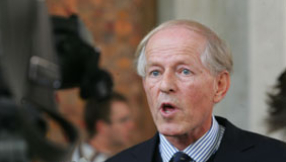The crucified corpses of five people accused of giving information to "the enemy" have been displayed by ISIS in the city of Mosul in Iraq.
"I saw five corpses of young men which had been crucified at a road junction in east Mosul," not far from districts which had seen heavy fighting, a resident told Reuters over the phone.
"The Daesh people [ISIS] hung the bodies out and said that these were agents passing news to the infidel forces and apostates," he said referring to the Western allies backing the campaign and the Shi'ite-led government of Prime Minister Haider al-Abadi.
Brutal killings have become a hallmark of ISIS' campaign to create a caliphate in the Middle East. On Monday, 100 beheaded bodies were found in a mass grave at a college near Mosul.
Mosul is ISIS' last stronghold in Iraq, and has been run by militants since they conquered large parts of Northern Iraq in 2014. It has seen intensified violence since an offensive to retake the city was launched on October 17.
At least 34,000 civilians have fled Mosul in the weeks since, and are said to be in desperate condition after living under ISIS rule for more than two years. Up to 700,000 more are expected to flee in the coming weeks.
The militants are putting up a fierce defence after their leader, Abu Bakr al-Baghdadi, told them in a speech last week to remain loyal to their commanders and not to retreat in the "total war" with their enemies.
He urged ISIS fighters to "turn the nights of the unbelievers into days, to wreak havoc in their land and make their blood flow as rivers".
The gruesome public display of the bodies appeared to be a warning against other potential informers, and a clear message to the city's remaining 1.5 million residents that the ultra-hardline Islamists are still in charge, despite losing territory to the east of the city.
Residents contacted by telephone late on Tuesday said many parts of the city were calmer than they had been for days, allowing people to venture out to seek food, even in areas which have seen heavy fighting over the last week.
"I went out in my car for the first time since the start of the clashes in the eastern districts," said one Mosul resident. "I saw some of the Hisba elements of Daesh (ISIS) checking people's beards and clothes and looking for smokers".
Islamic State's Hisba force is a morality police unit which imposes the Sunni jihadists' interpretation of Islamic behavior. It forbids smoking, says women should be veiled and wear gloves, and bans men from Western-style dress including jeans and logos.
Hisba units patrol the city in specially marked vehicles.
"It looks like they want to prove their presence after they disappeared for the last 10 days, especially on the eastern bank," the resident said.
Mosul is divided into two halves by the Tigris river running through its centre. The eastern half, where elite Iraqi troops have broken through Islamic State defences, has a more mixed population than the western, overwhelmingly Sunni Arab side, where Islamic State fighters are believed to be strongest.
Additional reporting by Reuters.













